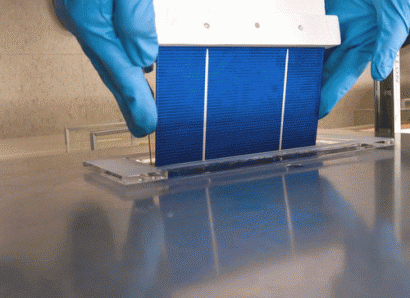
This month’s figures, published by research company Bloomberg New Energy Finance, draw on the world’s most comprehensive database of transactions in clean energy worldwide. They show a clear split between investment in clean energy technology and equipment providers – which remained depressed in Q2 in the face of world economic and stock market troubles – and generating asset investment, which held up well.
It should be noted that this is the first time Bloomberg New Energy Finance has included estimated quarterly figures for small-scale projects. Previous published quarterly figures included only venture capital, private equity, public markets and larger-scale asset investment; figures for small-scale projects, such as rooftop PV, were provided only annually. The figures for Q1 2012 and Q2 2011 quoted above have been restated for comparability.
The star performance in the second quarter came from China, which saw a surge in investment to $18.3 billion in the April-to-June period, up 92% from the previous quarter, with several large solar photovoltaic and wind projects each securing hundreds of millions of dollars in financing.
Europe and the US enjoyed solid but less spectacular gains in investment in Q2, of 11% and 18% over Q1, to reach $20 billion and $10.2 billion respectively. Overall, solar accounted for $33.6 billion of investment in Q2, up 19% on Q1, and wind $21.6 billion, up 47%.
Michael Liebreich, chief executive of Bloomberg New Energy Finance, said: “China has recently quadrupled its domestic goals for solar installations. And it has been by far the biggest market for wind turbines for several years. These figures underline the pivotal role China is playing in the clean energy sector. Its torrent of supply-side investment was one of the main reasons why renewable energy costs have been plummeting; we are now seeing China creating enough demand to start mopping up some of the resulting over-capacity.”
The continuing challenge for companies hoping to raise equity finance for expansion was highlighted yet again by a fresh 15% fall in the WilderHill New Energy Global Innovation Index, or NEX, which tracks 96 clean energy stocks worldwide. At the end of Q2, the NEX stood at 115.25, 75% below its record high posted in November 2007, and just 15% ahead of its indexing start-point in 2003.
Public market investment in clean energy stood at just $1.2 billion in Q2. This was nearly double the rock-bottom first quarter figure, but 75% below that for the second quarter of 2011. Venture capital and private equity investment was also subdued, at $1.5 billion in Q2 this year, down 28% from Q1 and 39% from the second quarter of 2011.
Asset finance of utility-scale renewable power and fuel projects, however, rebounded strongly in the April-to-June quarter. It reached $35.9 billion, up 50% on Q1, albeit still 24% below the figure recorded in the second quarter of 2011.
Among the largest projects financed in the second quarter of this year were the 270MW Lincs offshore wind farm, off the UK coast, for $1.6 billion; the 419MW Flat Ridge Wind Farm phase two in the US, for $800m; and the 250MW Guodian Shanxi Qinyuan Taiyue Wind Farm phase two in China, for $317m. The largest Chinese solar project financed was the Shanlu & Shengyu Bayannur Wuyuan PV plant, at $316m.
Small-scale projects of less than 1MW, such as rooftop photovoltaics, were estimated to be worth $21.5 billion in Q2 this year, 13% more than in the same quarter last year.
Liebreich said: “Small-scale projects are becoming an increasingly important part of the world’s energy mix, particularly following the 75% drop in the cost of PV modules over the past three years. Germany and Italy remain the largest markets, but small-scale PV is now broadening its geographic base, with installations in the US, Japan and China all growing strongly. We see further expansion across the sun-belt as costs continue to come down.”
The largest venture capital and private equity deals of the quarter saw Fisker Automotive of the US clinch $148m for its plug-in hybrid vehicle development, and Sapphire Energy, also of the US, secure $144m for its algae-based biofuel business. The largest public market deal was a $340m initial public offering by Chinese solar water heater company Jiangsu Sunrain Solar Energy.
Among the smaller clean energy sectors, biomass and waste-to-power recorded investment of $1.4 billion in Q2, down 22% from the first quarter; biofuels saw a 12% fall in investment to $750m, and small hydro (projects of less than 50MW) a 30% slip to $1.1 billion. Energy-smart technologies, such as smart grid and advanced transportation, showed an impressive 74% rise to $1.1 billion but this was still down on the equivalent deal flow last year.
For additional information:

